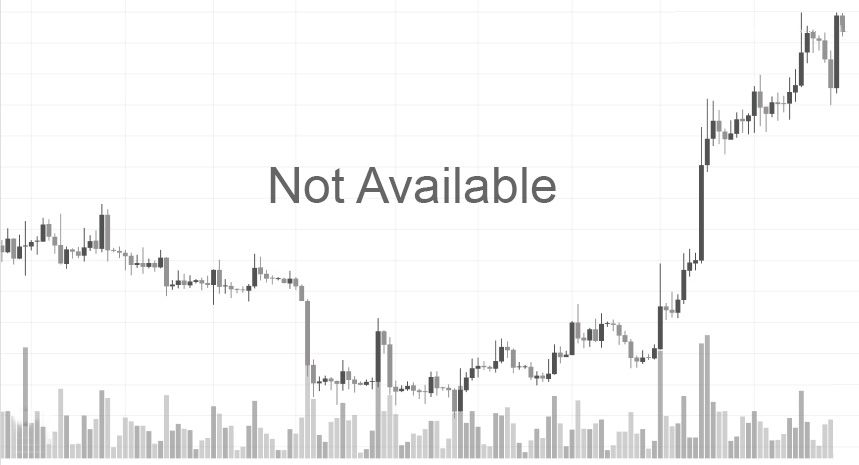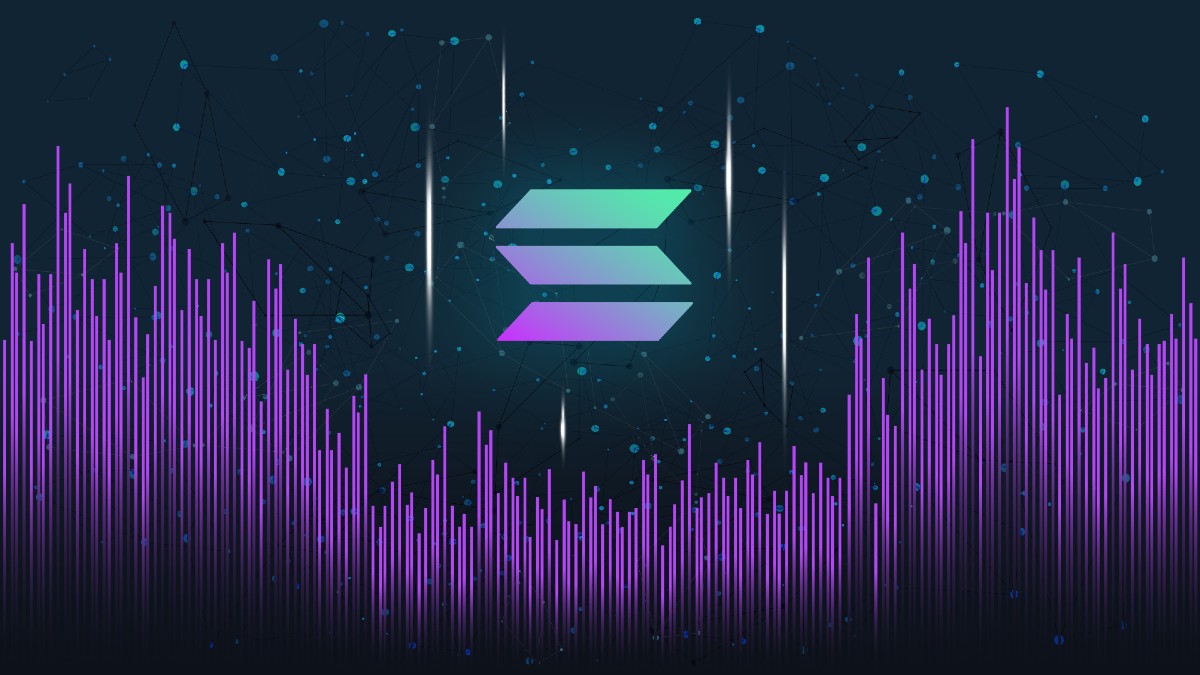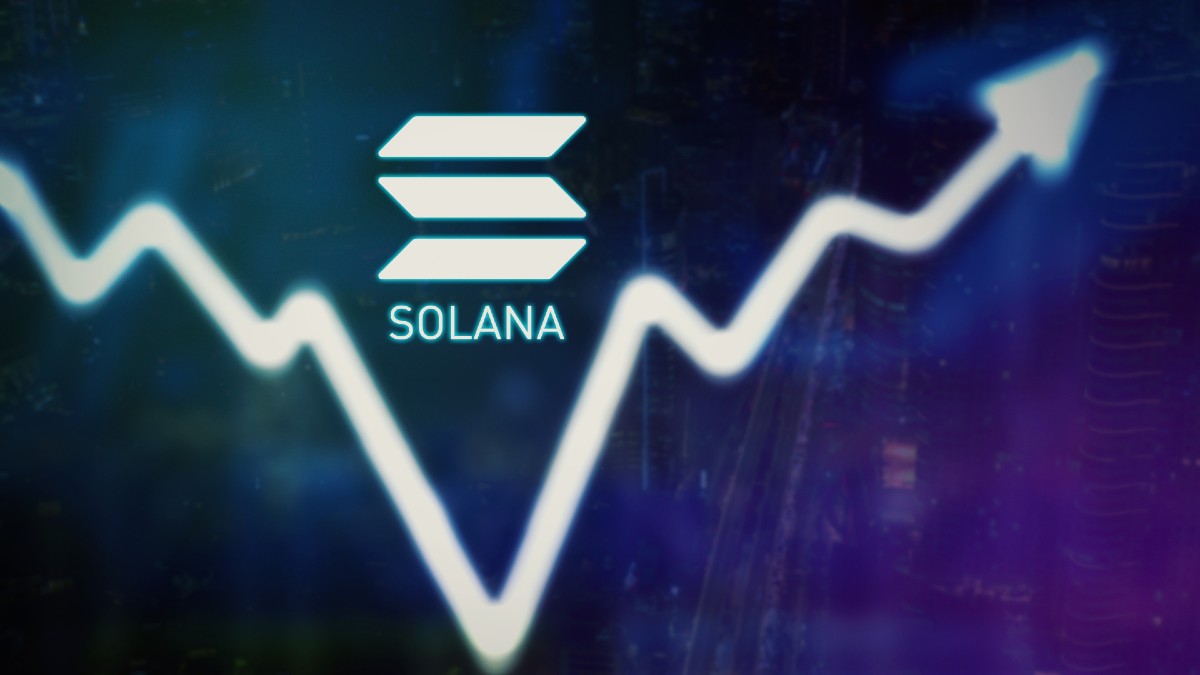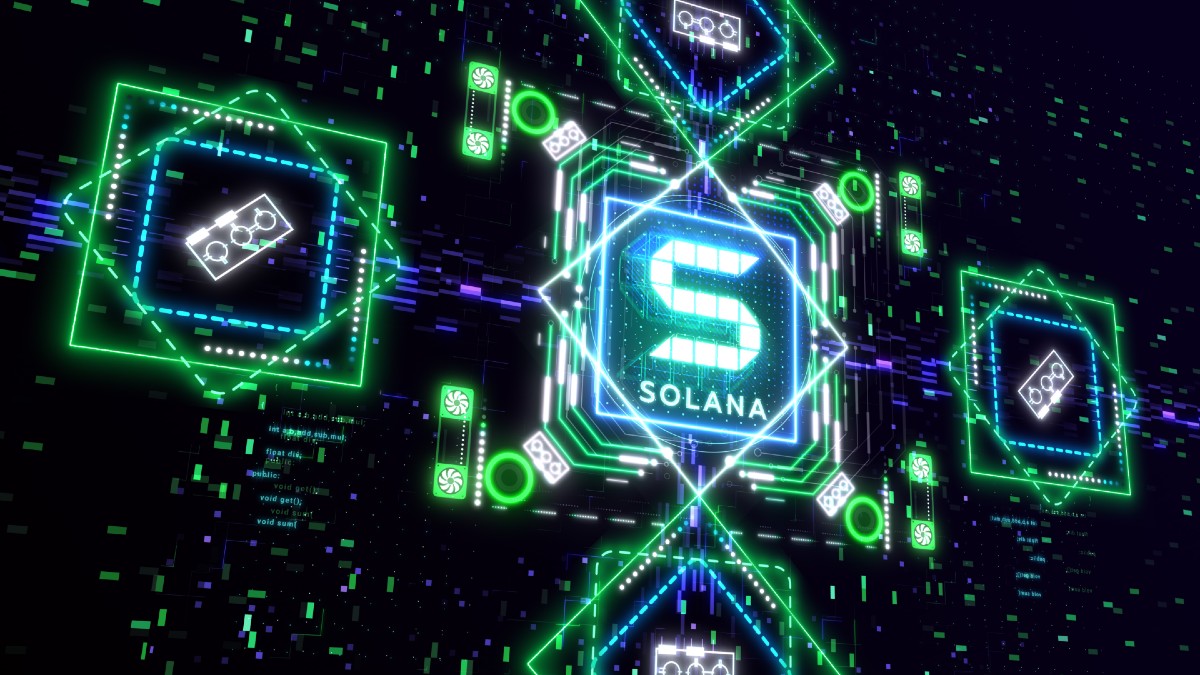Solana
Solana currently traded at $153.83 price, we update this information in real time. Over the past 24 hours it changed from $153.96 to $153.83. Currently Solana is ranked as #5 in our chart. The total supply of Solana is 446,930,396.00

Solana (SOL) is a crypto that has risen to prominence thanks to its impressive scalability and efficiency. Below, we offer you a detailed introduction to this cryptocurrency, discuss the Solana price, how Solana works, its risks and benefits, its outlook for the future, and how you can buy and hold Solana of your own.

Solana Price Analysis
Coin Name Solana Solana Symbol SOL Solana Price $153.73 Solana Price Change 24h ▲ 0.05% Solana Price Change 7d ▲ 13.81% Solana Market Cap $68,705,871,098 Circulating Supply 446,930,824 SOL
You can see that like many other cryptos, Solana has been subject to some extreme changes in price. The price peaked at around $259.52 in 2021 before dropping way back down to trade for under $10 in 2022. More recently, SOL’s price has been on the rise again and currenty (April 23, 2024) Solana is trading at around $153.73 which is -1.45% change from 24 hours ago.
A big factor that impacts Solana’s price is the public’s relationship with Ethereum (ETH). One of the reasons SOL went up so much in value in 2021 was because the public saw it as a superior competitor to ETH. Frustration with ETH gas fees is also driving the current rise in SOL.
As for why it tanked in 2022, that was because of the fiasco with Sam Bankman-Fried, who had invested heavily in Solana. The crypto became “guilty by association,” and a lot of people sold it as SBF’s scam fell apart.
As with other cryptocurrencies, SOL’s price is also impacted by factors such as supply and demand and other news events.
What is Solana (SOL)?
Let us start from the basics: Solana is an open-source blockchain that aims to provide a fast, scalable and advanced marketplace and platform for decentralized applications (dapps). Often dubbed the “Ethereum killer”—as are most similar projects—it tackles the issues that plague Ethereum and other Proof of Work-based blockchain projects by opting for a different consensus algorithm and making other improvements in all aspects perceived as weaknesses in their competitors.
Solana was first envisioned in 2017 by Anatoly Yakovenko, who was an executive at tech company Qualcomm before that, so he already had extensive experience in distributed systems and decentralization prior to starting the project. He was joined by Greg Fitzgerald, formerly the Chief Technology Officer and, as of August 2021, advisor of Solana Labs, and Eric Williams, now Chief Scientist, in creating the network.
The project first launched in 2020, three years after it was conceived. It addresses the issues of other blockchains by combining two consensus mechanisms: Proof of Stake and Proof of History. Proof of Stake requires decision-making participants in the network, or validators, to stake some of their token holdings before they can make decisions; making good decisions rewards them, while making bad ones that go against the health of the network is punished by taking their stake away.
In fact, Solana was created with a specific use case in mind, namely as an infrastructure for developing decentralized apps and smart contracts.
Solana is also renowned for its energy efficiency. As many cryptos have had a significant adverse impact on climate change, a cryptocurrency with a smaller carbon footprint is a big deal. In fact, Solana states that when you conduct a SOL transaction, you are using no more energy than you would if you searched on Google a few times. This gives Solana virtually a net zero impact.
Learn more: What Is Proof-of-Stake?
However, Proof of Stake can run into issues when the correct order of transactions has to be determined. This is where Proof of History comes in. With so many participants in different time zones, a decentralized system is hard-pressed to find a single way to timestamp transactions in order to keep them organized. Instead of trusting any given timestamp, Solana’s Proof of History algorithm just proves something has happened before and after other events. In other words, it creates a historical record that proves that an event has occurred at a specific moment in time. According to Yakovenko, this ensures that their blockchain is much faster than other Proof of Stake alternatives.

If you’re interested in learning more about how Solana works, with in-depth technical explanations of the blockchain and its rules, you can read all about it in the Solana whitepaper.
Along with the expected pros of blockchains, like decentralization, security, and immutability, Solana’s speed makes it an excellent place for decentralized finance (DeFi) applications, but also dapps like games. Its speed ensures that a network congestion is extremely unlikely to happen, so fee prices are quite low compared to its competitors.
All of this means that Solana is now the home to many projects of all sorts, with something for everyone—all of which users can access using SOL tokens.
How Does Solana Work?
What makes the decentralized Solana network so efficient? The answer is its reliance on proof-of-stake, as opposed to the older proof-of-work.
With traditional proof-of-work, cryptocurrencies need to be mined by solving puzzles. Proof-of-stake is a validation process that skips the mining and the puzzles. All participants have to do is lock their coins into the network.
Participants who lock in their coins like this qualify to be randomly and passively selected to add blocks to the blockchain (and receive rewards).
You can see why this is so much better for streamlining the process than solving puzzles. Far less energy is spent, which is what makes the system so efficient, scalable, affordable, and eco-friendly.
Indeed, Solana goes a step further, integrating an additional process called “proof-of-history.” According to Solana, this special process speeds up validation over what would be possible through proof-of-stake alone.
Who Created Solana?
Anatoly Yakovenko, previously an executive at Qualcomm, created Solana in 2017. His experience creating cell phone networks was what gave him the expertise and insights to create an efficient scalable network in the form of Solana.
Solana Market Performance
As of the time of this writing, the Solana market cap is $42,945,078,242. This puts its ranking at #5. The cryptos that are beating it include Bitcoin (BTC), Ethereum (ETH), Tether (USDT), and BNB (BNB).
How to Buy and Store Solana
You know the answer to the question “What are Solanas?”, and you know more about how they work. If you are ready to get your own SOL, follow the steps below.
- To buy and store Solana, you need:
- An exchange: This is where you can buy and sell SOL and other cryptos.
- A wallet: This is where you can store SOL and other cryptos.
There are many different options for both. If you want to keep things simple and convenient, you can choose a platform that combines a wallet and an exchange.
- Register an account at the exchange and open a wallet account (this may be a one-step process if it is a combined service).
- Complete the Know Your Customer (KYC) verification process. This is where you submit documents that verify your identity.
- Deposit money into your exchange account.
- Use the funds you just deposited to purchase your first SOL.
If there is a wallet that is part of your exchange account, the funds will be stored there, and you are all set. But you can connect an external wallet and send your SOL there if that is what you prefer.
If you wish to sell your Solana later down the line, you can simply exchange it for a different crypto or for your native fiat currency. You can then make a withdrawal to your bank account, e-wallet, etc.
The Future of Solana
As we discussed, the FTX collapse and scandal adversely impacted Solana’s reputation, causing the price to crash. But SOL is slowly making a comeback.
Anatoly Yakovenko said in September 2023, “I think I would love to see us land, from a technical perspective, multiple leaders per slot. And this is something that is a very different roadmap from all the other blockchains.”
By integrating this feature, Solana seeks to make transactions on the network more fair in their processing.
It will not be easy for Solana to bring back the level of trust it had before FTX, and to grow that trust, but right now, there are reasons to be optimistic that it can do just that. The price has risen sharply over the past few months and there is optimism that Solana can remain a major player in the space.
SOL Token
The SOL token is the backbone of the Solana network. It is used to pay gas fees on the network, but also for staking, so users can support the network’s security and earn inflationary rewards. The token was launched amid the release of the beta mainnet in March 2020. As of the time of writing, in September 2021, it is the seventh largest token by market cap according to data from aggregator CoinGecko. It reached its all time high on September 9th, when it was trading at USD 213.47 per coin. With a market cap of around USD 40bn, Solana’s token is firmly wedged into the top 10 cryptocurrencies.

SOL Wallets
Before you buy Solana’s token, you need to have a wallet where you can store your holdings. The wallet you choose will depend on your personal requirements, but also on your comfort with technology; the vast majority of users will need to choose a third-party wallet with an intuitive interface, while those who know their way around their command-line app (advanced users or developers) could opt for those, as new features on the Solana blockchain will always be supported on the command line first before being integrated into third-party solutions.
If you’re sticking with third-party wallets, you can choose between mobile apps and web wallets. Some mobile app wallets that support solana are:
- Exodus
- Trust Wallet
- Coin98
- Zelcore
Out of all these wallets, only Exodus supports staking (more on that further down), but Zelcore can also connect to all Solana-based dapps, as well as trade numerous other cryptos.

On the other hand, if you spend the majority of your time on a PC, a web-based wallet may be more intuitive to use. Some of these include:
- Phantom
- Solflare
- Sollet
- MathWallet
- BitKeep
The first two support staking as well. Sollet, MathWallet, and BitKeep support all Solana-based tokens aside from SOL, but MathWallet apps do not, which means you will only be able to store your SOL holdings on the web version of the wallet.
Those who have SOL lying around may be interested in staking.
How to Stake SOL
Staking SOL tokens is one of the best-known ways to earn passive income by simply not being able to spend your SOL holdings. To do so, all you have to do is stake tokens to one or more validators on Solana’s Mainnet.
First, you must use a wallet that supports staking. These include:
- Phantom.app in conjunction with a seed phrase or a Ledger Nano.
- SolFlare.com in conjunction with a keystore file or a Ledger Nano.
- Solana command line tools can perform all staking operations in conjunction with a CLI-generated keypair file wallet, a paper wallet, or with a connected Ledger Nano.
- Exodus wallet—but you are automatically assigned their partner validator instead of choosing your own.
- Binance and FTX exchanges—again, you can only stake to their partner validator here.
Once you’ve chosen your method, you will have to follow the instructions of the wallet you are going with, as each will work slightly differently. However, they all have detailed guides, so you’re unlikely to get lost in the meantime. The account used for staking will be different from the one you use to send and receive tokens.

If you’re using a wallet that lets you choose your own validator, you will have to make that choice as well. There are no right or wrong answers here—this is something you have to do by yourself, as the network does not endorse anyone, in the interest of decentralization. After that, your wallet of choice will also have the steps you need to follow in order to delegate your stake.
Solana Ecosystem
At the time of writing, there were 368 dapps on the Solana blockchain. Most of them are DeFi-related, but many are also non-fungible token (NFT) projects, various explorers and tools, etc. They are all listed on the Solana website, with their names and short descriptions readily available. Some of the projects have a more detailed description when you click on them, offering a very intuitive way to research what they are and how they work. You can also click on Learn More, which takes you to the website of the dapp.
Additionally, Solana has a Developers tab on their website, which offers access to all resources required to develop on the Solana blockchain. This also includes blog posts for total beginners, with high-level explanations of what the project is and how it works, walkthroughs, videos, courses on how to build on the network, as well as various other tools. All of these make it relatively easy for developers to join the ecosystem.
Solana Block Explorer
Block explorers are used for more than just tracing your own transactions. In essence, a block explorer is a blockchain search engine that allows you to search for a particular piece of information on the blockchain. Aside from transaction information, this includes the current hash rate and transaction growth, gas fees, and other info related to the blockchain.
The Solana block explorer will show you the circulating supply, active stake, and current price of the token, as well as a myriad of other, increasingly complex things that you may or may not need. This includes live transaction stats, so you can see the transaction speed of the network, any changes it has gone through, and generally just ascertain the health of the network.
The Supply tab will also let you see the top 20 largest holders of all circulating SOL tokens. Clicking any of them brings up all available data—as with any address—like their previous transactions, activity, etc.

Risks and Challenges
The biggest problems Solana is facing right now are not tied to the past but to the present and future.
While Solana is an efficient network for decentralized apps, alas, fraudulent apps are on the rise. These apps target users through phishing and similar techniques. Many of the scammers appear to be based in Russia.
If these security problems are not addressed quickly and thoroughly, we may see Solana’s value tank once again.
Regulatory and Legal Aspects of Solana
Yakovenko is supportive of increased regulatory oversight in the crypto market. In September, he wrote in Fortune, “For the U.S. to attract and retain the very best talent in the new digital landscape, we need a cogent regulatory framework that protects consumers and encourages entrepreneurship.”
He adds that government officials need to strengthen their personal knowledge and understanding of digital assets before they can regulate them effectively.
Community and Ecosystem
If you are curious to learn more about the Solana ecosystem, a good place to start is this page on the official website, where you can learn more about decentralized apps and projects that are running on the Solana platform.
Not surprisingly, there is a healthy community of Solana developers, users and enthusiasts. You can access some of Solana’s community resources right on the official website. You can also find additional Solana community outlets on social media sites.
Comparing Solana to Other Cryptocurrencies
To help put Solana in perspective, it helps to be aware of some of its chief competitors. We will start with Ethereum. Solana was developed to create a platform that would be better than ETH, without ETH’s weaknesses. ETH is notorious for its high gas fees, whereas Solana’s average transaction cost is just $0.00025. That said, ETH still has a much higher market cap than Solana, and remains the more prominent crypto.
Another top rival for Solana is Cardano (ADA). Like Solana, Cardano is designed to maximize efficiency and operate sustainably. It is scalable and fast. It is ranking 8th in terms of market cap right now, however, so Solana is still beating it in this regard. Plus, the long research phase for this crypto is a bit of a drawback.
Another crypto that is popular for its flexibility and which may pose a threat to Solana is Avalanche (AVAX). Just as Solana was built for smart contracts and decentralized apps, so was Avalanche. Right now, Solana is still faster than Avalanche for processing transactions, though Avalanche may have some security advantages through its unique consensus protocol. It is right behind Cardano in terms of market cap.
FAQs
Let’s conclude this post about Solana by answering a few frequently asked questions you might have.
How much is 1 Solana to buy?
The Solana price can vary quite a bit. At the moment of this writing, 1 Solana = $99.19 USD. But Solana’s all-time low was just $0.5052, and its all-time high was $260.06. So, the cost to buy 1 Solana depends on its value at the instant of purchase.
Is Solana actually safe?
Solana is safe to use, but it does carry the risk of high volatility, like many other cryptocurrencies.
What is Solana used for?
Solana’s primary purpose is to support the development of decentralized apps and smart contracts. But some people also use it as an investment, or to buy or sell goods or services.
Who can use Solana?
Solana is often used by developers creating decentralized apps. But anyone can hypothetically buy and use Solana.